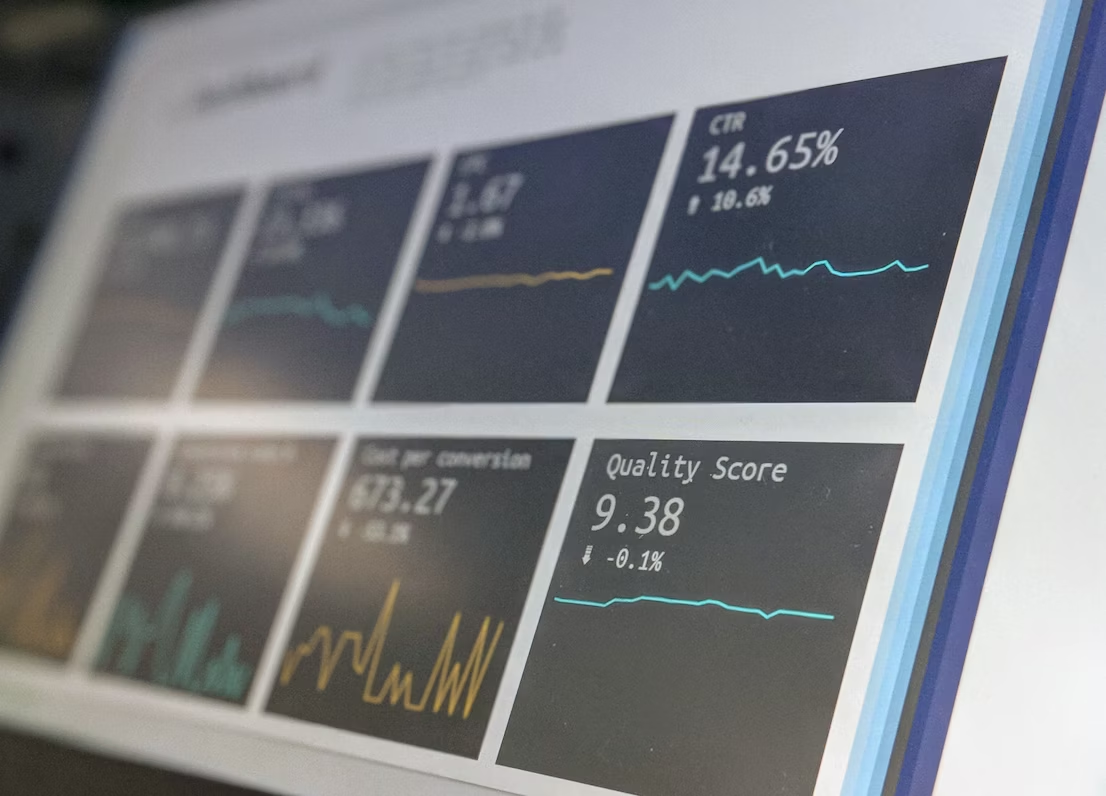Introduction
Creating and maintaining an effective rehearsal schedule is one of the most important tasks for a director or stage manager. The rehearsal schedule acts as the backbone for the entire production process, mapping out the journey from the first read-through to opening night. Without a clear, well-organized rehearsal schedule, the rehearsal process can quickly become chaotic and unproductive.
The rehearsal schedule allows the director to thoughtfully plan out the progression of the rehearsal process, structuring the timeline to best serve the show and the artists involved. It ensures adequate time is provided for table reads, blocking, working scenes, technical rehearsals, dress rehearsals and more. The schedule aids collaboration and communication across the entire production team - actors, designers, technicians - by providing a shared reference point. A strong rehearsal schedule empowers the director to tell the most vivid theatrical story possible within the allotted timeframe.
In the following sections, we will explore best practices for constructing effective rehearsal schedules utilizing tools and templates. We will cover key considerations around scheduling phases, calendar layouts, adjustments, communication and more. Whether you are directing a play for the first time or are a seasoned theatrical veteran, having a well-planned rehearsal schedule is essential for an efficient, creative rehearsal process.
Pre-Planning
Before creating the rehearsal schedule, it's important to thoroughly pre-plan. This involves:
Read and Analyze the Script
The director and dramaturg should read through the script multiple times, making notes and annotations. Look for themes, character arcs, plot points, and other key details that will impact staging. Consider the overall tone and style. Analyze things like:
- The number of scenes and locations
- Intricacies of the plot and relationships
- Complexity of the themes and character development
- Genre and writing style
This script analysis will inform rehearsal needs and schedule.
Determine Rehearsal Needs Based on Script
After analyzing the script, determine what needs the most rehearsal time. For example:
- Scenes with many characters on stage
- Intricate blocking requirements and movement
- Scenes involving choreography or fighting
- Emotionally intense scenes
- Scenes involving props, costumes, or technical elements
- Scenes requiring musicality or spoken rhythm
The rehearsal schedule should allocate more time to complex scenes and techniques compared to simpler dialogue scenes. Know the areas that will need extra rehearsal beforehand.
Scheduling Considerations
When creating a rehearsal schedule, there are several key factors to take into account:
Cast and Crew Availability
- Check in with all cast and crew members about their availability during the rehearsal period. Make sure to note when they have conflicts due to work, school, other commitments, vacations, etc.
- Try to schedule around major conflicts that affect several people. For smaller conflicts, those individuals may just have to miss a rehearsal or two.
- Confirm that everyone is available for all tech rehearsals and performances. These dates absolutely cannot be changed once the schedule is set.
Space Availability
- Make sure the rehearsal space is available for all the dates and times you want to schedule. Other groups may be using the same space.
- Book the rehearsal space as early as possible to secure the times you need.
Tech/Dress Rehearsal Schedule
- Tech and dress rehearsals require full cast, crew, lighting, sound, and set to be present.
- Schedule the tech rehearsals in order - lighting, sound, set, then full tech with all elements combined.
- Allow enough time in the schedule for lengthy tech rehearsals and sufficient dress rehearsals.
- Techs and dress runs often take longer than regular rehearsals.
Rehearsal Phases
Rehearsals typically progress through several key phases:
Table Reads
Table reads involve the cast sitting around a table and reading through the script together for the first time. This allows everyone to get familiar with the script, characters, and overall story. Table reads are useful for:
- Hearing the play out loud
- Understanding character relationships
- Discussing the script and characters
- Beginning to make discoveries that inform acting choices
Scheduling 1-2 table reads is recommended.
Blocking
Blocking refers to determining the actors' movements and positions on stage. During blocking rehearsals, the director maps out the staging and works with actors to determine where they will move and stand during scenes. Key things addressed during blocking include:
- Entrances, exits, crosses
- Interaction between characters
- Use of levels, furniture, set pieces
- Stage pictures and composition
Enough time should be allotted for thorough blocking of all scenes.
Working Rehearsals
After the play is blocked, working rehearsals focus on rehearsing scenes to refine the acting, staging, pacing, and other details. This involves:
- Running scenes multiple times
- Trying different approaches and choices
- Incorporating technical elements
- Polishing and sharpening the performances
Working rehearsals allow actors to solidify their understanding of characters and scenes. Sufficient working rehearsals are crucial for bringing the show to a performance-ready level.
Run Throughs
Run throughs involve rehearsing lengthy portions of the play or the entire play from start to finish. This helps the cast and crew practice executing scene changes, transitions, pacing, and continuity. It gives a sense of the show as a cohesive whole.
Increasingly lengthy run throughs are done as opening night approaches (e.g. Act 1, Act 2, full run with intermission, full run without stopping). Run throughs with full technical elements are especially important.
Tools and Templates
Effective rehearsal scheduling relies on having the right tools and templates to organize information and keep everyone on track. Here are some key resources directors and stage managers should utilize:
Notion Templates
Notion has become a popular project management tool for theaters. Its flexibility allows you to create customized databases, calendars, and workflows for your production. Notion templates help standardize your scheduling process and provide a central hub for the cast and crew. Some helpful Notion template features include:
- Interactive calendar view of the rehearsal schedule
- Scene and character breakdowns
- Blocking notes and references
- Contact lists and company rosters
- Costume and prop tracking
- Daily schedule and notes
When starting a new production in Notion, look for templates that already have relevant databases set up to customize for your needs.
Rehearsal Checklists
Checklists help ensure critical tasks, gear, and information aren't overlooked on rehearsal days. Create master checklists that cover:
- Location prep (e.g. ensure space is unlocked, temperature set, furniture arranged)
- Safety checks (e.g. first aid kit, bottled water for actors)
- Equipment and gear needed
- Props and costume pieces required
- Scenes, acts, or songs being rehearsed
- Who is called for the rehearsal
- Distribution of sides, music, or other handouts
Checklists should be prepared in advance and reviewed each day by the stage manager. Digital checklists on apps like Notion allow for real-time updates and tracking.
Sample Rehearsal Schedules
Having sample rehearsal schedules to reference for time estimates can help directors and stage managers build out effective plans. Sample schedules clearly break down how much time to budget for core activities like:
- Warm ups and physical preparation
- Scene work and blocking
- Workthroughs and run throughs
- Tech rehearsals
- Notes sessions
- Design and production meetings
Referencing sample schedules from similar productions helps provide starting frameworks to adapt to your show's specific needs and approach.
Tools like templates, checklists, and schedule samples enable directors and stage managers to stay nimble and focused during the intense rehearsal process. Leverage these resources to create solid plans and workflows for your team.
Calendar Layouts
The calendar layout you choose for your rehearsal schedule will depend on the type of show, number of scenes/musical numbers, and your goals during each rehearsal period. Here are some common calendar layouts for rehearsal schedules:
Weekly Calendars
- List the days of the week horizontally and the times vertically to map out general schedule and key events
- Block out times for designer run-throughs, costume fittings, marketing events etc
- Leave room to fill in scene/sequence work day-by-day
Scene/Sequence Focus
- Create a calendar for each scene, musical number or sequence
- Track how many rehearsals are spent on each section
- Mark when the scene will be solidified and ready to run continuously
- Identify scenes that need extra rehearsal time
Tech Rehearsal Calendar
- Make a calendar just for tech week with more granular time slots
- Schedule instrument levels, sound notes, mic checks, costume parade, spacing, cue-to-cue, full runs, etc
- Include notes or track times of key cues and scene shifts
- Adjust schedule if certain elements need more tech rehearsal time
The layout and level of detail for each calendar will depend on the specific needs of your production. Prioritize tracking major milestones while leaving flexibility to adjust the schedule when needed.
Communication
Effective communication is essential for an effective rehearsal schedule. Here are some best practices:
Sharing the Schedule
- Share the schedule with all cast and crew as far in advance as possible. This allows everyone to plan accordingly.
- Send schedule updates if anything changes.
- Consider sharing the schedule on a collaboration platform like Notion or Google Calendar so everyone can access the latest version.
- Print copies of the schedule for the rehearsal space and/or send reminders before each rehearsal.
Last Minute Changes
- Notify cast and crew ASAP if rehearsal plans change.
- Have a contact tree or group chat to quickly disseminate updates.
- If you need to cancel, shorten, or move rehearsal, provide as much notice as possible.
- Ask cast and crew to confirm they received the change so you know the message was delivered.
Rehearsal Reports
- Designate someone to take notes at each rehearsal and share a report afterward.
- The report should cover what material was covered, notes from the director, issues that came up, etc.
- Share rehearsal reports with all participants. This keeps everyone on the same page.
- Maintain a running Google Doc or Notion page to store all rehearsal reports in one place.
Adjustments
Staying flexible is crucial when creating rehearsal schedules. No matter how thorough you are with planning, changes and conflicts are bound to arise. It's important to build in buffer room in the schedule to accommodate the unexpected.
Be prepared to refine the schedule as needed throughout the rehearsal process. If new conflicts come up with cast members, you may need to adjust call times or swap rehearsal days. Remain open to making edits, while still protecting key dates like tech week and dress rehearsals leading up to the performance.
When faced with scheduling challenges, focus on the big picture goals rather than sticking rigidly to the original plan. Getting the cast fully prepared and keeping up morale are what matters most. With open communication, creative solutions can be found that work for everyone.
Keep the lines of dialogue open with your cast and production team. By regularly checking in about availability, you can catch conflicts early and problem-solve together. Maintain a collaborative spirit and remember that flexibility, within reason, will benefit the production overall. An adaptable approach and attitude of compromise allows the show to go on, even when the schedule must change.
Rehearsal Setup
Having the proper rehearsal setup and workspace is crucial for keeping rehearsals organized, efficient, and on schedule. Here are some tips for preparing the rehearsal space and materials:
Preparing the Space
- Ensure the rehearsal room is cleared of any unnecessary furniture or items. Only keep what is essential for the scenes being worked.
- Set up chairs around the perimeter of the space for actors not actively rehearsing.
- Make sure there are enough tables and surfaces for actors to put down their belongings, scripts, and water bottles.
- Confirm any necessary props or set pieces are available.
- Prepare any needed rehearsal cubes or spike tape to mark set positions.
- Check that lighting and sound equipment (if being used) is setup properly.
- Make sure the space is clean and safe for actors to move freely.
Organizing Materials
- Print out copies of the latest version of the script for all actors. Highlight any recent rewrites.
- Have extra pencils, paper, and binders on hand.
- Prepare copies of the rehearsal schedule to hand out.
- Make sure the stage manager has all supplies needed - clipboard, script, rehearsal reports, etc.
- Confirm access to water and bathrooms.
Beginning on Time
- Arrive early to setup the space.
- Start on schedule, even if some actors are late or missing.
- Take attendance and note any absent actors.
- Give a brief overview of the day's agenda and goals.
- Jump right into warm ups or the first scene or activity planned.
Having a well prepped and organized rehearsal space sets the tone for an efficient, productive rehearsal that can stay on schedule. Being ready to begin on time also keeps things moving forward as planned.
Conclusion
A well-planned and organized rehearsal schedule is crucial for a smooth and efficient production process. By taking the time to map out the phases of rehearsal and assign appropriate timelines, directors can ensure the cast and crew have adequate opportunity to rehearse scenes, develop characters, integrate technical elements, and gel as an ensemble.
Several key points make creating effective rehearsal schedules easier:
- Know the timeline of your specific production and how much rehearsal time is available. Budget extra days for unforeseen circumstances.
- Understand the phases of rehearsal and how needs change over time - from table reads and blocking to working scenes and runs.
- Schedule ample time for actors to be off-book before adding technical elements.
- Use rehearsal calendar templates to map out dates, times, locations, scenes, and personnel needed. Share schedules widely.
- Adjust schedules when needed but avoid major disruptions close to show dates.
- Secure appropriate spaces for the activities planned each day.
- Maintain open communication with the production team about evolving needs.
- Plan for surtitles ahead.
With forethought and organization, directors can promote a sense of confidence and readiness leading up to opening night. A tight rehearsal schedule keeps all players on track toward a polished, cohesive show.









